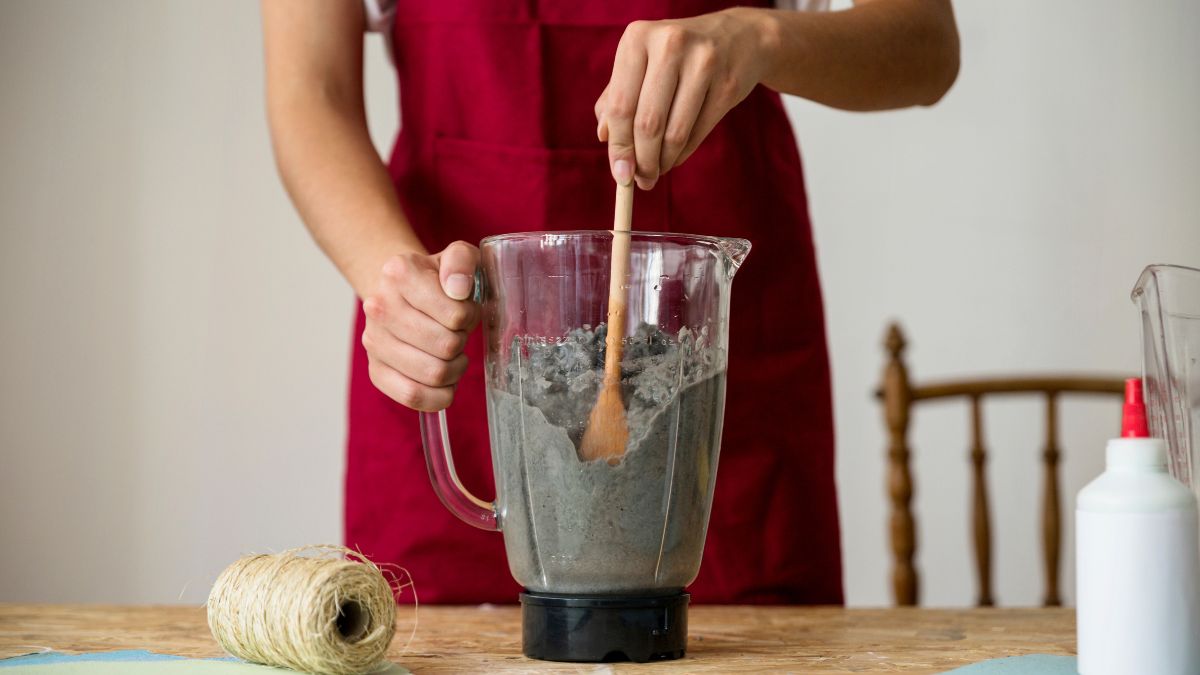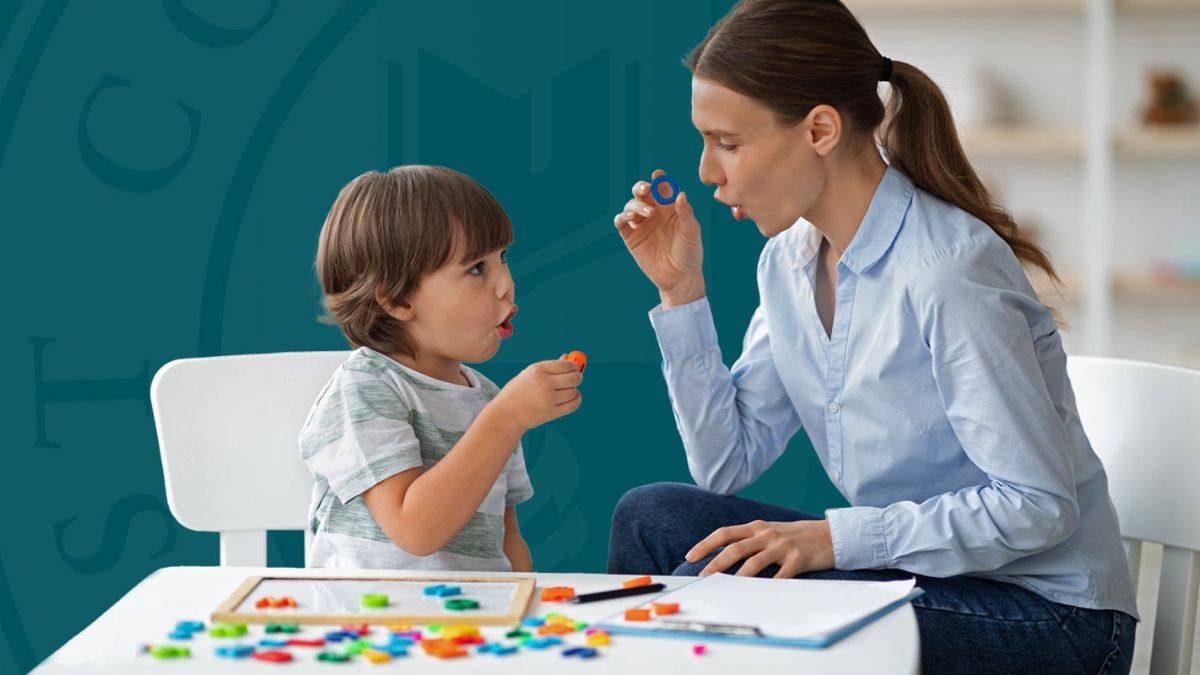Health
What is CHS Healthcare? Product Offerings and Buying Tips Explained

Finding a supplier who actually designs, supplies, and installs a disability assistive device is no less than digging a goldmine. You feel empowered, confident, and content with the idea of having a modern technological solution.
Beating its competition, CHS Healthcare is one name popular in the market. Besides offering its equipment for people facing moderate to heavy mobility issues, the company supports society’s cause too. However, many people are aware of the limited company’s information, making it harder to establish trust in its services.
In this blog, you will discover everything about the company’s purpose, mission, its product offerings, and its targeted businesses. You’ll also realise a few tips on buying CHS equipment. So, keep reading the blog till the end.
Overview of the CHS Healthcare
CHS Healthcare is a leading name in the healthcare industry, supporting millions of people living with disabilities through its assistive technologies. The brand is known for designing durable quality, tech-advanced, and ergonomically built up patient handling products.
Presently, you can explore a diverse range of products like standing transfers, ceiling & floor hoists, turnaids, bathroom equipment, and add-on slings. Each of these products are designed keeping in mind the comfort, safety, and mobility needs of the individuals. Some of them can be a person with mobility impairments, paralyzed, wheelchair user, non-ambulatory, and older adults.
The motive behind establishing this company is to enhance the quality of life for people living with mobility impairments. Beyond the supportive tools, the CHS Healthcare works on a mission to:
- Reduce physical strain on caregivers manually lifting an immobile person.
- Reduce the impact of disability on disabled individuals during improper and sudden lifts.
- Increase the efficiency of healthcare services.
- Preserve the dignity of people who might feel shy, uncomfortable, or anxious when changing places frequently.
Assistive Equipment to Consider
Here is a good explanation of each of the mobility equipment and its use-cases.
-
Stand and Transfer Hoists:
Stand and transfer aid is a remote-controlled standing device for people with moderate mobility impairment. This helps you to stand upright when moving from your bed to a wheelchair and a bathroom.
-
Ceiling Hoists:
This device helps a person who cannot stand at all to move across different rooms. Attached on the ceiling through track systems, it lets you sit on the sling while ensuring maximum safety and comfort.
-
Floor Hoists:
CHS Healthcare floor hoist works as an excellent alternative to ceiling hoists, overcoming challenges of homes requiring extensive modifications. Featuring a soft, full-body supporting, and durable sling, the hoists fit perfectly for a person who cannot bear their weight.
-
Slings:
A sling is a nylon or polyester fabric designed for a specific hoist system. This helps with carrying your weight effectively while using the hoist loops on its bar. You can expect leg-divided, full-body support, or lower-back support slings.
-
Bathroom Equipment:
Bathroom equipment maintains a person’s dignity, comfort, and safety while using a toilet seat or commode. You can buy a changing table, privacy screen, height-adjustable bathtub, or dispensers to ensure complete safety.
-
Turnaids:
Turnaids help in positioning you to a different side while you are resting or sleeping. This is suitable for paralysed individuals or those rehabilitating post the surgery.
Which Service-Based Industries Can Benefit from CHS Healthcare Equipment?
Let’s now have a look at some of the service industries which certainly require each of the assistive equipment and can receive its benefits.
-
Homes:
People with immobilities living in their homes require standing aids, floor hoists, or bathroom equipment for an independent life. Whether you need equipment in your bedroom, bathroom, or moving around the home, the company’s products are easy to use for any caregiver.
-
Hospitals:
Support workers, nurses, or doctors in hospitals can also benefit from the modern assistive technologies. Having any of the CHS Healthcare’s equipment reduces the burden and improves the efficiency of healthcare systems.
- Aged Care:
Staff and support coordinators in residential aged care facilities can also use any of these devices. It helps aged care’s population with different mobility needs, supports compliance standards, and fits well to limited shared spaces.
-
Educational Facilities:
CHS Healthcare offers tools and technologies to empower children living with physical disabilities in their school premises. Whether they need it in their classroom, bathroom, first-aid room, or close to their playground, there is a tech-based aid for every need.
-
Community or Changing Places:
Property owners or builders of community places like shopping malls, salons, aquatic centres, or restaurants can also install assistive technologies. Particularly in bathrooms or other rooms where premium-quality and affordable assistive hoists and other bathroom accessories are an immediate need.
-
Specialist Disability Accommodation:
The Specialist Disability Accommodation (SDA) facilities are required to meet NDIS compliance and remain accessible for people facing immobilities. With CHS devices, you can promote an inclusive and safe environment for everyone.
Step-By-Step Tips on Finding the Right Assistive Device (for your facility):
- Sneak peak at your goals behind choosing a particular device.
- Prepare a budget for assistive technologies, keeping in mind the purchase price, maintenance costs, and expenses on fulfilling any specific needs.
- Compare different products based on their purpose, user’s mobility level, features, pros, cons, and ease of use.
- Predict long-term needs of the person using the assistive aid.
- Enquire about the custom order to enhance the comfort, safety, and maneuverability.
- Rent an equipment for people residing in aged care facilities or homes but requires minimal support.
- Learn the user’s guide and required maintenance from the sales team.
- Ask for the detailed quotation including the costs of the equipment, hidden costs, and complimentary technical assistance.
Final Words
We hope you found this blog useful. As you see, CHS Healthcare is a prominent figure in the healthcare industry. It performs its role beyond selling mobility assistive devices and empower the life of people seeking assistive technologies.
Take the next step today — request thorough quotation or enquire more about their products and services before making a final call. Contact the team in Brisbane, Sydney, or Melbourne locations.
Health
The Power of Gentle Fitness Classes for Confidence and Mobility in Later Years

Why Fitness Matters in Later Years
Maintaining fitness in later years is crucial for overall health and quality of life. Regular physical activity helps preserve muscle mass, improve balance, and maintain joint flexibility, reducing the risk of falls and injuries. Beyond the physical benefits, exercise supports cardiovascular health, aids in weight management, and promotes better sleep patterns. Staying active can also boost mental well-being by reducing stress, enhancing mood, and sharpening cognitive function, making daily tasks easier and more enjoyable.
For older adults seeking guidance and motivation, working with a certified professional can make a significant difference. Programs such as personal training Reston VA offer tailored exercise plans that accommodate individual fitness levels and goals. Personalized support ensures safe, effective routines that maximize results and help maintain independence and vitality as you age.
Gentle Fitness Classes: Options and Benefits
Tai Chi: Balance, Calmness, and Coordination
Tai Chi is a practical, gentle exercise for seniors, often referred to as “meditation in motion.” It features slow, deliberate movements and focused breathing, making it accessible to everyone. Regular practice enhances balance, flexibility, and posture, thereby reducing the risk of falls and promoting independent living as one ages.
Water-Based Exercise: Joint-Friendly and Fun
Water-based exercises, such as swimming and water aerobics, are beneficial for aging joints because buoyancy reduces impact and the risk of injury. They help individuals with osteoarthritis or mobility issues strengthen their muscles and improve their heart health without experiencing pain. These exercises support joint movement, lower blood pressure, promote heart health, and aid weight management. Group classes add social fun with music and games.
Strength Training: Energy, Balance, and Independence
Strength training helps seniors counteract muscle loss with simple exercises, such as chair squats and wall push-ups, that improve movement, balance, posture, and overall energy. Regular, guided classes ensure safety, motivation, and progress, leading to better ability and confidence to enjoy activities.
The Social and Emotional Impact of Group Classes
Participating in group fitness classes greatly boosts social involvement and emotional health among seniors. These classes not only improve physical health but also reduce loneliness by building bonds among peers with similar objectives. The friendship and camaraderie fostered encourage ongoing participation and strengthen a sense of community. The encouraging environment motivates members, and social events centered around fitness add extra meaning to their lives outside the gym.
Getting Started Safely
Begin exercising with guidance from a doctor or trainer, especially if you have health concerns. Safety is key, so consult with an expert to plan your activity. Community centers and gyms typically offer beginner classes for seniors, featuring trained instructors who can modify exercises to accommodate different mobility levels. Start slowly, pay attention to how your body responds, and keep a consistent routine. Gentle activities, such as Tai Chi, yoga, or water aerobics, can improve your health, foster social connections, and help you appreciate nature. Wear comfortable clothing, stay well-hydrated, and celebrate your progress, no matter how small.
Conclusion
Embracing gentle fitness classes in later years provides benefits that extend far beyond the physical. These programs support mobility and independence, enrich social lives, strengthen emotional health, and help preserve confidence for whatever challenges or adventures the future may hold. No matter your current fitness level, there’s a class or activity that can help you progress—with strength, balance, and joy, making every stage of life vibrant and fulfilling.
Health
Innovative Applications of Modern Chemical Blending Technologies

Modern chemical manufacturing is experiencing a transformation propelled by advanced blending technologies. These improvements are streamlining processes, raising product quality, and prioritizing sustainability across industries. Whether it’s pharmaceuticals or agriculture, innovations in chemical blending are unlocking solutions to some of the world’s toughest challenges. Choosing the right industrial mixer is becoming critical as manufacturers face heightened demands for consistency, safety, and environmental compliance.
Empowered by digitalization, artificial intelligence, and new eco-friendly approaches, today’s chemical blending practices are radically different from those of just a decade ago. As companies strive to minimize waste and resource use, novel technologies are enabling shifts toward greener production and greater operational agility.
Advanced Mixing Systems in Agriculture
The agricultural sector is a prime example of how advanced mixing technologies yield real-world benefits. New systems incorporate turbulence-enhancing mixer designs and closed-loop controls that facilitate optimal blending of agrochemicals. These improvements ensure that inputs like fertilizers, pesticides, and micronutrients are delivered with precision, minimizing chemical runoff and environmental contamination. With digital sensors tracking pH, temperature, and nutrient loads in real time, farmers are seeing increased yields while reducing waste.
Moreover, digital control systems can automate mixing operations, allowing farmers and agronomists to focus on crop management rather than manual mixing. As sustainable farming becomes ever more critical, innovations in mixing technology act as a force multiplier, fostering food security and environmental protection.
AI and Machine Learning in Chemical Blending
Artificial intelligence and machine learning are redefining chemical blending by delivering process intelligence once unimaginable. AI-based models can predict how different chemicals will interact, optimize formulations, and rapidly simulate scenarios to identify the most effective blends. In manufacturing settings, these tools monitor key variables and make automated adjustments, ensuring consistently high-quality products and boosting operational efficiency.
The use of AI extends to preventive maintenance as well—monitoring vibrations, temperature, and output consistency can predict potential failures before they disrupt production. Importantly, intelligent blending systems can also help reduce energy usage, furthering sustainability efforts in large-scale chemical operations.
Eco-Friendly Additive Processes
As global stakeholders emphasize greener production, chemical researchers are exploring alternatives to longstanding synthetic processes. Innovations such as enzyme-catalyzed, light—driven fluorination enable the production of valuable chemicals without harsh reagents or excessive waste. This eco-friendly approach is already being applied in the manufacture of pharmaceuticals, crop care solutions, and renewable fuel additives, aligning the chemical sector with global sustainability targets.
These process improvements also support regulatory compliance by decreasing the production of hazardous byproducts. Companies pioneering such advances position themselves for growth as eco-conscious markets—and government regulations—continue to evolve.
Enhanced Mixing in Porous Media
Mixing efficiency is a constant challenge, especially in environments where liquids move through porous materials. Researchers are tackling this by adding flexible polymers to fluids, which causes elastic instabilities and creates turbulence-like mixing. The result is faster reactions, better material dispersion, and shorter mixing times, ultimately leading to greater product consistency and lower operational costs.
This technology is particularly relevant for chemical processing in soil remediation, oil recovery, and specialty manufacturing, where confined environments can impede traditional mixing methods.
Water-Based Release Systems in Composites
The composite materials industry is shifting away from solvent-based and per- and polyfluoroalkyl substances (PFAS)-containing release agents, spurred by both performance and environmental imperatives. Water-based release systems now offer equivalent—or better—performance, reducing emissions, plant odor, and clean-up complexity.
Manufacturers implementing these technologies are not only meeting stricter regulatory requirements but also enhancing worker safety and lowering costs. With demand for PFAS-free solutions rapidly increasing, water-based release systems are quickly becoming the new industry standard.
Digitalization and Cloud Computing
Digitalization is revolutionizing chemical operations at every level. By harnessing data analytics, cloud platforms, and digital twins, chemical companies can optimize production, predict equipment failures, and accelerate research and development. Cloud-connected sensors and machine learning models collect, process, and act on vast amounts of data, providing real-time visibility and improving both quality and safety.
Digital twins enable operators to run virtual simulations that test various blending conditions, minimizing downtime and maximizing output. As more chemical manufacturers invest in digitalization, industry-wide efficiency gains are expected—driving down costs while pushing up standards for quality and safety.
Conclusion
Modern chemical blending technologies are unlocking new efficiencies, supporting sustainability, and enabling previously unattainable levels of product quality across sectors. As blending systems become more intelligent and environmentally aware, industries from agriculture to advanced composites are poised to benefit. By adopting these innovations, chemical manufacturers can adapt to a rapidly changing world while remaining competitive and compliant in an era of global transformation.
Health
The Last Step That Matters Most: Building Real-World Communication After Speech Therapy

Introduction
Completing speech therapy marks a significant milestone, yet the journey doesn’t truly end once therapy sessions conclude. The ability to confidently communicate in everyday situations is, for many, the real measure of lasting progress. Applying the tools you’ve acquired in therapy can sometimes feel daunting, but mastering the final link in speech therapy means building resilience, independence, and success well beyond the clinic room.
Bridging the gap between structured practice and spontaneous conversation isn’t always straightforward. The transition requires not only persistence but also creative strategies and consistent support. By focusing on real-world communication, individuals can transform their efforts in therapy into meaningful, lifelong skills.
Bridging the Gap Between Therapy and Daily Life
Speech therapy equips individuals with a powerful foundation, but it is the real-world application that truly reinforces these accomplishments. Everyday environments—whether at home, work, or in public—provide the varied, unpredictable contexts necessary for communication growth. Practicing conversation skills outside the therapy room promotes adaptation and flexibility, enabling individuals to tailor their communication style to any situation. This adaptive approach not only builds confidence but also ensures improvements are both sustainable and relevant to daily life.
Taking proactive steps, such as planning opportunities for social interaction or seeking new experiences, can provide invaluable practice. For instance, joining a hobby group or engaging in neighborhood events introduces fresh conversational contexts while offering a safe space to stretch communication boundaries.
The Role of Support Systems
Family, friends, and colleagues have tremendous influence on the successful integration of speech therapy skills. Their encouragement provides a sense of safety and motivation, fostering an environment where communication can be practiced without fear of judgment. Transparent discussions about progress, setbacks, and personal goals strengthen relationships and reinforce the journey toward clear, confident speech.
Establishing open communication among loved ones also creates accountability and shared understanding, offering gentle reminders and positive reinforcement during daily interactions. Peer support groups, both online and in local communities, provide additional mentorship and practical advice, helping to navigate everyday communication challenges with empathy and confidence. You can learn more about the value of community participation in communication recovery in this resource from Psychology Today.
Overcoming Challenges
Navigating real-world communication often means confronting setbacks and unexpected hurdles. Triggers like unfamiliar environments, group settings, or fast-paced conversations may bring about anxiety or self-doubt. Recognizing these triggers and developing healthy coping mechanisms—such as mindful breathing or prompt clarification requests—can help manage stress and maintain composure. Celebrate small victories, as each successful conversation, no matter how brief, is a step in the right direction.
Setting realistic, incremental goals and tracking progress can demystify the transition. By breaking larger aspirations into manageable steps—like ordering food at a restaurant or joining a discussion at work—progress becomes both measurable and motivating. Remember, the process is a journey: challenges are natural, solutions are attainable, and persistence always pays off.
Embracing Continuous Learning
Language and communication skills are dynamic, evolving as individuals encounter new people, situations, and challenges. Embracing the mindset of ongoing learning ensures that growth doesn’t plateau after therapy. Regularly seeking feedback from trusted peers and remaining open to adjusting techniques fosters adaptability and long-term competence.
Staying engaged with speech enrichment opportunities—such as public speaking workshops, book clubs, or additional language courses—can keep skills sharp and relevant to changing circumstances. A willingness to try new approaches, adapt to feedback, and explore unfamiliar conversational terrain is at the heart of lifelong communication success.
Conclusion
The last step that matters most in the journey after speech therapy is transitioning skills from the clinic to the complexities of daily life. By focusing on the final link in speech therapy—integrating learned techniques into real-world communication—individuals unlock the confidence and independence essential for meaningful connection. With strong support systems, mindful strategies, and a desire for lifelong growth, this crucial step leads to enduring success in every conversation ahead.
-

 GENERAL11 months ago
GENERAL11 months agoFrom Fan Art to Original Works: The Diversity of doujindesu Creations
-

 Entertainment7 months ago
Entertainment7 months agoEnchantment & Excitement: Crafting Unforgettable Event Experiences
-

 GENERAL9 months ago
GENERAL9 months agoEngland Business Visa Requirements for American and International Citizens in 2025: A Guide for Entrepreneurs
-

 GENERAL7 months ago
GENERAL7 months agoCrossword Conundrum: The Significance of vault opener nyt crossword
-

 GENERAL10 months ago
GENERAL10 months agoLatest Trends in Men’s and Women’s Jackets for the Upcoming Season
-

 GENERAL7 months ago
GENERAL7 months agoExploring the World of nhentai.nef: A Comprehensive Guide for New Users
-

 Health11 months ago
Health11 months agoDiscovering gel ooru: The Ultimate Guide to This Unique Traditional Craft
-

 GENERAL12 months ago
GENERAL12 months agoWhy raterpoint is Revolutionizing Customer Feedback
